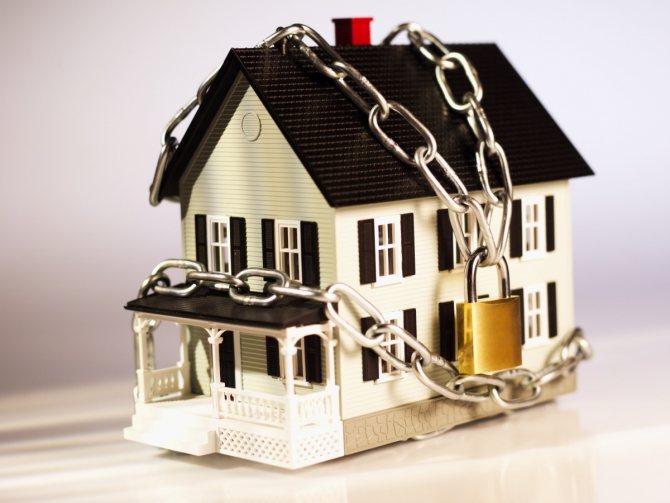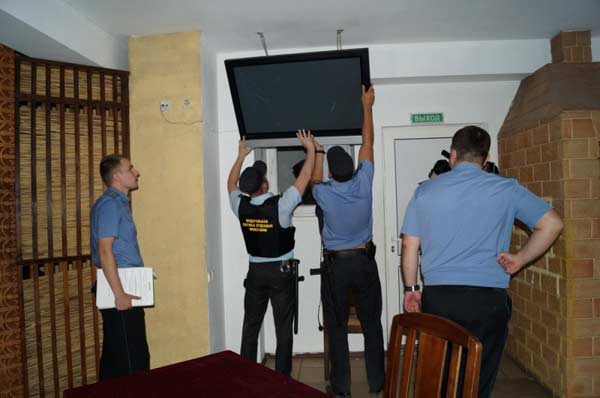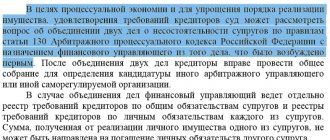Enforcement of a court decision to collect a debt is an unpleasant event, first of all, for the debtor and his family. Undoubtedly, this is an extreme measure of coercion - when all peace negotiations have already been completed, there is a court decision and it has entered into legal force.
Bailiffs begin to fulfill their collection duties with the issuance of a resolution to initiate enforcement proceedings. After this, the procedure for execution and seizure of property begins, the stages of which we will describe in detail in our article.
When property is seized
Most often, enforcement proceedings are initiated following the consideration of a civil debt dispute. At the same time, even before the final decision is made, the judge, at the stage of preparing the case for hearing, has the right, at the request of the plaintiff, to take interim measures (for example, a ban on disposing of the debtor’s property and the seizure of accounts).
The ruling, which lists all the prohibitions, is immediately sent to the bailiff department at the defendant’s place of residence, as well as to other registration authorities.
It turns out that in many cases the debtor, thinking that the unpleasant arrest procedure will only follow the results of the consideration of the case, is often taken by surprise by the bailiff who rings his doorbell. Considering that in certain cases the debtor may not even know that a lawsuit has been filed against him, the sudden arrival of a government representative is perceived extremely negatively.
Read more about securing claims.
Do not forget that the mechanism of seizure has long been formed and is often used in criminal cases. Typically, as part of criminal proceedings, the investigator submits a petition to the court, which is resolved in the same way as a petition to conduct a search, seizure, removal of information from subscriber accounts, etc. A court order entered within 10 days is sent to the bailiffs for execution in the usual manner, which is also typical for civil cases.
Law enforcement agencies most often go to court to:
- execution of a sentence (for example, when an article of the Criminal Code of the Russian Federation provides for punishment in the form of a large fine);
- to execute possible confiscation of property (for example, in corruption cases);
- to secure a claim in a criminal case (for example, when a claim for the recovery of budget funds is brought for acquisitive crimes).
An arrest presupposes a ban, the nature of which will be determined by a representative of the Federal Bailiff Service. Thus, a ban may be established on alienating a car or equipment, and in some cases, a ban on using it. In exceptional cases, if the bailiff deems it appropriate, the bailiff has the right to seize the item.
And yet, in most cases, bailiffs seize the property of debtors in civil cases for debt collection. The bailiff has the right to independently initiate the procedure or the claimant declares this.
Claimant's statement about the need for arrest
Typically an application is submitted when:
- The bailiffs are inactive . It often happens that due to the large number of enforcement proceedings, the bailiff is “careless” in searching for the debtor’s sources of income and valuables, especially if it is known that he has the status of “unemployed”.
- the collector reliably knows the sources of the defendant’s hidden income or the property that he deliberately hides.
The application is written in free form and submitted to the office of the bailiff department in which enforcement proceedings are being conducted:
In the OSB Leninsky district of Kirov
Claimant: Petrova L.D., living in Kirov, st. Krasnoslobodskaya, 9
Debtor: Petrov I.N., living in Kirov, st. Osennyaya, 2
Enforcement proceedings No. 10101/272727/2018
Application to the bailiffs to seize the property of the alimony debtor (sample)
The OSP of the Leninsky district of the city of Kirov is in the process of enforcement proceedings No. 10101/272727/2018, initiated on the basis of the writ of execution No. 1717/2018, issued by the Leninsky district court of the city of Kirov in the case of collecting alimony from I.N. Petrov. for the maintenance of a minor child Petrova P.I., born in 2010.
The decision to initiate enforcement proceedings was made by bailiff K.A. Polonina. 03/01/2018, copies were sent to me and the debtor. Until now, alimony payments to Petrov I.N. are not produced.
I know for sure that the debtor owns part of the non-residential premises at the address Kirov, st. Onegina, 3, letter A.
Based on the above, in order to execute the court decision, taking into account the significant amount of debt in the amount of 234,577 rubles, guided by Art. 80 of the Federal Law of the Russian Federation “On Enforcement Proceedings”,
ASK:
Seize part of the non-residential premises belonging to the debtor at the address Kirov, st. Onegina, 3, letter A. for the purpose of subsequent foreclosure and sale, as well as other property, the ownership of which by the debtor will be established by the bailiff.
Petrova L.D., July 30, 2020.
In the sample application, we indicated the specific property that, in the opinion of the claimant, should be seized. At the same time, the claimant may not know which specific vehicle or premises is owned by the defendant. Therefore, given the free form of writing the application, you don’t have to specify the items.
After receiving such an application, the bailiffs are immediately (no later than the next day) obliged to issue a decree to seize the debtor’s property.
If there are no grounds to satisfy such a request, the claimant is denied, also in the form of a resolution. For example, when the bailiff had previously seized everything of value, but the claimant did not know about it and filed a statement. There will be a refusal even if the debt is less than 3,000 rubles . If you disagree with the actions of the bailiff, you can appeal them to the court in the manner prescribed by the Code of Administrative Proceedings.
Foreclosing on the debtor's property - where to start
If there is a need to recover various property, you need to have legitimate evidence that would indicate that the borrower has a debt and does not want to repay it. In this case, you need to go to court. The papers prepared for submission to the courts must confirm the bad faith of the debtor-payer and contain a receipt for payment of the state duty. For example, part of the debt may even be repaid, but the individual is not going to repay the rest, although he has such an opportunity due to the presence of property that has a certain material value.

Collection of property from the debtor
What property is subject to seizure
In accordance with Art. 80 of the Federal Law “On Enforcement Proceedings of the Russian Federation”, only property that belongs to the debtor can be seized . Consequently, the bailiffs must make sure that the equipment or valuables belong to the person against whom the proceedings were initiated. Confirmation of this may be checks, certificates, a purchase and sale agreement or testimony of persons living together with this person.

the value of the item that comes into the view of the bailiff must be proportionate to the amount of the debt .
For example, it may be considered clearly illegal to seize a car if there is a small debt of several thousand rubles. First, the bailiffs collect information about the debtor's bank accounts and whether he has income, that is, they try to enforce the court decision with money. The second stage is items of value, and if, taking into account the assessment, this is not enough for full repayment, shares, securities and only then real estate are seized. However, the law allows the bailiff to determine the order of collection at his own discretion, depending on the situation.
The property subject to arrest is not always located at the place of registration of the debtor. In some cases, bailiffs may visit other addresses if they know for certain that the property is stored with third parties or organizations. In practice, the possession of objects by other persons occurs under an agreement of storage, provision for use, etc. – usually these are situations more typical for individual entrepreneurs or employees of organizations.
According to the law, the bailiff has the right to visit residential or non-residential premises. First of all, at the address indicated in the writ of execution, court decision or court order. The bailiff can independently determine the last place of registration or actual residence by checking this information in the FMS database.
UFFSP employees are primarily interested in expensive valuables (gold items, equipment), cash and bank accounts (requests are made to credit institutions to find out this information), as well as large items - for example, a car. Real estate, as we have already noted, can be seized, but only if the property is not the only residence. The exclusive basis for the arrest of the debtor's only apartment by bailiffs may be a court decision to foreclose on it in a mortgage dispute.
There are other restrictions on imposing prohibitions on property.
Sale of property in case of insolvency of a citizen
/How to declare yourself bankrupt/Sale of property
When the arbitration tribunal makes a decision to declare an individual bankrupt, a bankruptcy procedure or, otherwise, the sale of property is introduced in relation to him. The definition of this procedure is contained in Art. 2. 127-FZ.
The sale of an individual's property during bankruptcy is aimed at proportionate satisfaction of creditor claims and is the final stage in declaring a citizen financially insolvent. After it, the process comes to its logical conclusion.
When is the sale of property used in the bankruptcy of an individual?
Before the stage of property sale, according to the general rule, the stage of debt restructuring is introduced. During this procedure, a comfortable debt repayment schedule is developed for three years. Such a plan should involve repaying most of the debt to creditors.
The sale of a citizen’s property is a last resort measure in the bankruptcy procedure, which is introduced against the debtor under the following conditions:
- Restructuring cannot be introduced in relation to a citizen - he has no permanent income or its amount is so small that it makes it impossible to make monthly payments (after such tranches the debtor must have an untouchable minimum for his existence and the maintenance of dependents).
- None of the parties submitted a detailed restructuring plan within the established time frame.
- The citizen committed repeated violations of the restructuring schedule.
- The court did not approve the proposed restructuring schedule (it is not economically justified, was adopted in violation of the procedure, it contains unreliable information, etc.).
- The meeting of creditors made a negative decision based on the results of the vote for the restructuring plan. Although the judge may go against the will of the creditors.
- If, as a result of the implementation of the restructuring plan, it was not possible to repay the entire amount of debts.
- If an individual violates the terms of a settlement agreement concluded with creditors and the subsequent resumption of the bankruptcy case.
The initiative to start the procedure for selling property can come from creditors, the financial manager (he first considers this issue at a meeting of the individual’s creditors) and the debtor himself. They must file a corresponding petition with the court.
Stages of the procedure for selling property in case of bankruptcy of citizens
The procedure for selling the property of an individual can be represented as the relationship of the following stages:
1. Formation of the bankruptcy estate.
The insolvency administrator describes all of the debtor's property. This includes all property that belonged to him at the time of the bankruptcy decision and acquired after that. Most often, the bankruptcy estate includes securities, real estate, vehicles, and expensive household appliances owned by the debtor.
If, during the bankruptcy of a legal entity, only what belonged to the company as a property is included in the bankruptcy estate, then in the event of the insolvency of an individual, his personal belongings will be included here.
2. Adjustment of the bankruptcy estate
At the request of a citizen, some property that is not subject to sale and seizure in enforcement cases must be excluded from the bankruptcy estate. The list of such property is given by the Federal Law.
Also subject to exclusion is property whose income from the sale cannot significantly affect the filling of the bankruptcy estate.
In accordance with the law, this is property worth no more than 10 thousand rubles.
The list of excluded property is approved by the arbitration court, and a corresponding decision is made.
During the adjustment, the composition of the bankruptcy estate may change either down or up. By law, the financial manager is required to conduct an analysis of all transactions made by a citizen over the past three years. If among them he identifies suspicious ones and those committed with interdependent persons (wife, children, parents, subordinates, etc.), then such agreements can be canceled, and the property alienated under them can be returned to the bankruptcy estate. Particular attention is paid to gratuitous transactions in favor of immediate relatives (gifts).
3. Property valuation
If necessary, an independent appraiser is involved in this stage, who will present a report on the market value of the debtor’s property.
4. Request by the manager for the sale of the debtor’s property at auction in court
5. Announcement of tenders
The bankrupt's property must be sold through open bidding in an auction format. Now all auctions are conducted exclusively in electronic form (according to amendments to the legislation of 2011). Information about them (venue and date) should be published in the public domain.
It is worth noting that all costs associated with holding auctions and publishing messages in the media fall on the shoulders of the debtor.
6. Bidding
The organizer of the auction for the sale of the property of an individual in bankruptcy can be either the bankruptcy manager himself or a specialized independent company (then the property according to the inventory must be transferred in its favor).
The auction must be held no later than two months after the bankruptcy estate is filled and handed over to the organizers. The auction is carried out in three stages. At the first stage, there is an upward auction.
The organizer sets a certain auction step in the amount of 5-10% of the initial cost, and the starting price is the market price of the property. The winner is the participant who managed to offer the highest price.
If applications for participation in the auction were not received or one participant was admitted, the auction organizer may decide to recognize them as invalid. In such a situation, the starting price of the property is set at a discount of 10-30% compared to the market price. It is necessary to publish messages in the media about the recognition of the auction as invalid.
Finally, at the last stage of the public offering, there is downward trading. Here you can find property at a price reduced by up to 90% compared to the market price. Usually only the most illiquid assets reach the public stage.
Property that could not be sold within the established time frame is returned to the bankrupt.
7. Settlements with creditors
When the bankruptcy estate is formed, settlements with creditors begin, in proportion to the requirements presented and in accordance with the priority approved by law. The proceeds also cover legal costs and pay remuneration to the financial manager and independent organizer.
8. The manager’s report to creditors and the court
The report on the sale of a citizen’s property must include all documents confirming the fact of the sale and settlements with creditors. A register of creditors' claims is compiled indicating the amount of the debtor's repaid obligations.
Even if the proceeds were not enough to make full mutual settlements, the debtor is declared bankrupt and the balance of debts must be written off. The court finally issues a verdict to terminate the bankruptcy procedure against the individual.
Features of the sale of citizens' property
All property of an individual at the stage of bankruptcy proceedings is managed by the arbitration manager. On behalf of the bankrupt, he conducts all matters that relate to his property rights. The debtor has the right to appeal the actions of the financial manager and court decisions.
It is worth considering that the sale of property of an ordinary citizen and a person who previously had the status of an individual entrepreneur is carried out in accordance with different rules. In relation to an individual (not an individual entrepreneur), the provisions of Art. 110,111,112,139-140 Federal Law on insolvency. Whereas property intended for running a business is sold similarly to the procedure established for legal entities.
Property that cannot be sold in bankruptcy
What property cannot be foreclosed upon in bankruptcy? Its list is established by Article 446 of the Code of Civil Procedure of the Russian Federation. Such property of a bankrupt individual includes:
- the only apartment or other real estate suitable for living (it is important to consider that this rule does not apply to the only housing that is pledged to the bank under a mortgage; it is subject to confiscation and sale by the secured creditor);
- land plots (except for mortgages);
- home furnishings and household items, personal items, with the exception of luxury items;
- property that is used by an individual in professional activities (only if its value is below 100 minimum wages);
- seeds and feed;
- Food;
- money in an amount less than the minimum required for living (it is established in each region for the current year);
- fuel;
- vehicles for a disabled person and other property necessary for health reasons;
- prizes, state awards, badges awarded to a citizen.
It is worth noting that if the debtor does not own all the property sold in bankruptcy, but the share or property is registered jointly with his wife, then it is also subject to seizure and sale. Difficulties can arise only if minors are registered in the apartment. Then you need to additionally obtain the consent of the guardianship authorities for such a transaction, which is unlikely to be obtained.
In other cases, creditors may make demands for the allocation of a citizen’s share in the common property. For example, an apartment is jointly owned by spouses. By default, the shares of the spouses are distributed between them in equal parts. After the sale of the apartment, half of the proceeds will go to pay debts to creditors, the other 50% will be returned to the spouse.
Deadline for selling property of individuals
The legislation establishes that the stage of sale of property during bankruptcy cases of an individual cannot exceed 6 months (usually about 4 months).
During this period, restrictive measures are introduced against the debtor (ban on alienation of property, travel abroad, etc.).
After which the financial manager is obliged to report on the results of his work to the debtor’s creditors and the court.
If there are objective circumstances indicating the need to extend the stage of property sale, the court may agree to accommodate the insolvency administrator.
For example, if difficulties arise with the return of illegally alienated property to the bankruptcy estate. Moreover, the manager has the right to extend the terms repeatedly.
It is usually not in the interest of any party to deliberately delay the insolvency process.
What property is not subject to seizure by bailiffs
In accordance with the rules of Art. 446 of the Code of Civil Procedure of the Russian Federation, the bailiff does not have the right to seize:
- a plot of land, if there is a building on it that falls under the term “the only suitable housing” for the debtor and his family (an exception is when the land is also the subject of a mortgage and it is on this obligation that enforcement proceedings have been initiated).
- items of ordinary furnishings - chairs, table, dishes, etc. Such “untouchable” property does not include luxury furniture or antiques.
- personal belongings - clothes, shoes, with the exception of jewelry, items made of gold and other precious metals.
- fruits, plants from the garden, pets, as well as buildings specially designed for their maintenance, if all this is not related to entrepreneurial activity and profit-making.
- property that the debtor needs in connection with his professional activities, if the cost of the item does not exceed 10,000 rubles. You need to know that the type of your professional activity in such cases will have to be proven - for example, a photographer, in order not to have his camera seized, must provide information about the nature of his work (service agreement, work book, etc.). Unofficial earnings may not be taken into account by bailiffs.
- seeds for sowing (not for sale).
- food products (any).
- funds up to an amount equal to the minimum subsistence level at the time of the arrest procedure. For example, in 2020, the cost of living for pensioners was set at 8,726 rubles. This means that it will be impossible to seize money in the home or account in an amount not exceeding this value.
- fuel if it is intended for heating in winter or for cooking. It is clear that these circumstances are typical for residents of towns and villages.
- property that is necessary for a disabled debtor - for example, a wheelchair; a car converted taking into account the physical condition of a person, etc. Of course, you will need to prove that the debtor has the appropriate status.
- all kinds of awards - medals, cups, figurines awarded to the debtor in connection with achievements in the field of sports, art, etc.
In addition, certain provisions of the Federal Law “On Enforcement Proceedings of the Russian Federation” prohibit the seizure of funds of the following categories:
- amounts that the debtor receives in compensation for damage to health, in connection with the loss of a breadwinner, payments in connection with an occupational disease or injury, etc.
- compensation payments from the state (social);
- child support;
- amounts paid by the employer in connection with the death of a loved one, the birth of a child, etc.
In order to prevent a ban on the disposal of transferred money, their origin should be confirmed with bank statements, accrual orders, etc.
The procedure for selling the property of an individual during bankruptcy in 2020
The Federal Law “On Insolvency (Bankruptcy)” (hereinafter referred to as the Federal Law) provides for several procedures, as a result of which a person can pay off debts on “preferential” terms or be completely freed from them. One of them is the sale of a citizen’s property.
In what cases does the law provide for the sale of a citizen’s property?
According to Art. 213.6 of the Federal Law, the court, when considering an application to declare an individual bankrupt, may make one of the following determinations:
- on accepting the application and introducing a debt restructuring procedure;
- about leaving the application without consideration;
- to terminate the proceedings.
But debt restructuring may not always be possible. This is discussed in Art. 213.24 Federal Law. According to its rules, the decision to introduce a procedure for the sale of property is made by the court in the following cases:
- The persons participating in the process did not submit a restructuring plan within the deadlines established by law.
- The restructuring plan has not been approved by creditors.
- The plan was canceled by the court.
- The proceedings in the case were resumed due to the fact that the terms of a previously concluded settlement agreement were violated, the ruling on the introduction of a restructuring procedure was canceled or in other cases provided for by law.
Practice shows that, often, the initiator of the procedure for the sale of property is the debtor himself or a financial manager friendly to him. Why is this happening. The fact is that debt restructuring implies their repayment, but on simpler terms. For example, for a longer period.
After the sale of property and the transfer of the proceeds to creditors, the debtor is officially declared bankrupt, against whom no further claims of a financial nature can be made. If a person does not have expensive property, then, relatively speaking, having lost a TV and a microwave oven, he cannot get rid of a debt of several million rubles.
Let us note that the debtor filing an application with the arbitration court has the right to petition specifically for the conduct of the procedure for the sale of his property, without considering the possibility of introducing a restructuring procedure. The basis for the petition is a difficult financial situation.
What property can be taken away
The answer to this question is contained in Art. 213.25 Federal Law. The law says that all the debtor’s property can be sold at auction, with the exception of that which cannot be foreclosed on. We will talk about it a little later.
The debtor has the right to petition to exclude their list of things to be sold, certain property in an amount not exceeding 10 thousand rubles.
For example, a bankrupt has a cell phone worth 5,000 rubles. The debt to creditors amounts to 800,000 rubles. Obviously, paying these same 5000, as they say, “will not make a difference.”
If you correctly substantiate the position that without a telephone the debtor will have a hard time for one reason or another, then there is a possibility that the court will grant the petition and exclude the said property from the bankruptcy estate.
Collection can also be applied to things that are in shared ownership. For example, if the debtor owns 1/3 of the right to a non-residential building, then measures can be developed to somehow repay the debt to the creditor using this property.
According to the norms of the Family Code of the Russian Federation, foreclosure can also be applied to the common property of the spouses.
Thus, the most profitable procedure for selling the debtor’s belongings will be for those bankrupts who do not own a large amount of material assets.
What property cannot be sold during bankruptcy?
The list of things is contained in Art. 446 of the Civil Procedure Code of the Russian Federation. This article deals with the following property:
- The debtor's only home, with the exception of the one that is encumbered due to receiving a mortgage.
- The land plots on which the above-mentioned housing is located.
- Personal items: shoes and clothing. Please note: Jewelry and other valuables may be for sale.
- Livestock that is not used for profit. Buildings necessary for housing and servicing animals.
- Seeds needed for sowing.
- Working tools for an amount not exceeding 10 thousand rubles.
- Food and money, amounting to the subsistence level.
- Fuel necessary for heating and cooking during the cold season.
- Vehicles, provided that the debtor is disabled.
The list turns out to be quite large. But it includes all those items that any person really needs. If, say, the debtor is deprived of seeds for sowing, then he will simply die of hunger.
The role of the financial manager
A manager is a person who completely organizes and controls the process of selling the debtor’s belongings. Actually, the title of the position speaks about this.
The financial manager has the right:
- Sell property.
- Open and close accounts in the name of the debtor.
- Realize the rights of the debtor.
- Participate in litigation on issues related to the debtor’s property.
- Submit an application to register the transfer of rights to the bankrupt's property.
- Organize procedures for assessing property and conducting auctions.
The procedure for selling the debtor's property
The sale of property in the event of bankruptcy of individuals consists of three stages.
Formation of the bankruptcy estate
Let's start with the fact that the debtor himself is obliged to prepare a list of his property and submit it to the court along with the bankruptcy application. The financial manager is required to submit to the justice body, within a month from the date of the ruling declaring a certain person bankrupt, a report on the composition and value of the property.
For these purposes, the financial manager is vested with a number of rights: to make requests to various bodies, organizations and institutions to find out what property is owned by the debtor; to challenge transactions made, obviously, for the purpose of removing certain property from the list of things belonging to the debtor.
Property valuation
According to Art. 213.36 Federal Law, it must be organized by the Finn himself. manager. It seems that a specialist with an appropriate diploma should be involved in the process. The manager is obliged to inform the court, the debtor and creditors about the results of the assessment. The bankrupt and his creditors have the right to appeal the assessment results.
Bidding
The law states that property worth over 100 thousand rubles and real estate are sold at open auction. The proceeds are transferred to creditors to fulfill the debtor's obligations.
Procedure for settlements with creditors
This is discussed in Art. 213.27 Federal Law. First, current payment requirements are satisfied. There is a certain order here.
First of all, alimony debts are paid off, all payments related to the bankruptcy case are paid: remuneration to the manager, legal costs, and so on.
Secondly, benefits and wages are paid. Next are utility bills. Finally - other current ones.
Debts that arose before the bankruptcy petition was filed are also paid off in order of priority. First, those arising from relations involving harm to life and health, from labor relations. Then - everyone else.
Creditors in whose favor the property was pledged have a special status. They are immediately given 80% of the amount received from the sale of the pledged item.
If there is not enough money for everything, then the remaining debt, with rare exceptions, is considered repaid.
Duration of the procedure for selling a citizen’s property
The law states that the procedure must be implemented within 6 months. But the financial manager has the right to petition the court to extend this period. If the demand is justified, the justice authority may extend the duration of the procedure for selling the debtor’s belongings over time.
After the procedure for selling a citizen’s property is completed - all property is sold and debts are distributed, the financial manager submits to the court a report on how the procedure was carried out and attaches all the necessary documents to it. The court, having studied this report, makes a ruling to complete the procedure for selling the property and declaring the debtor bankrupt.
As noted above, not all creditors may have enough money. For example, if there are two creditors, the debt to each of them is 600 thousand rubles. And the debtor has only 600 thousand worth of property, and the first creditor has arrears of alimony, then the second will receive nothing. The debt will be “forgiven.”
If some property could not be sold at auction, and the creditor does not want to take it for himself, then it is returned to the debtor.
The sale of the debtor's property during bankruptcy is not always carried out. This is a rather lengthy procedure that allows you to declare the debtor bankrupt and repay the debt or part of it to creditors.
How an arrest is made
After the initiation of enforcement proceedings, the defendant has 5 days to voluntarily pay the money that was collected from him.
After this period, the bailiffs charge a 7% enforcement fee on the amount of the debt and begin work on searching for property owned by the debtor. According to the law, bailiffs can seize property within those same 5 days if the amount of the debt is more than 3,000 rubles and there is an application from the claimant.
If there is no such statement, the bailiffs visit the debtor 2-3 weeks after the decision to initiate enforcement proceedings is issued.
The procedure for seizing property consists of the following stages:
- The bailiff visits the debtor at his registered address and presents him with the order.
- Inspects the premises, finds out who owns certain items, evaluates them from the point of view of the possibility of foreclosure (can this or that property be classified as personal belongings or luxury items, etc.).
- Invites two witnesses to draw up an inventory, which includes all the property that will be subject to seizure. In addition to this, the following information is also indicated here:
- description of objects, their purpose;
a note about the seizure or leaving for storage, indicating the place and person entrusted with monitoring the safety, indicating the address of the place of residence;
- restrictions on the right to use objects.
- In the decree or inventory, the bailiff makes a note about what kind of prohibitions are being imposed - a ban on disposal, a restriction on the right to use a particular item. In addition, in the act (another name for the inventory) the bailiffs must record the procedure for seizing the property, as well as the full names of all persons present, time and place, and preliminary assessment of values.
- The bailiff orally and in writing in the act explains the responsibility for the alienation, waste, damage or failure to take measures to preserve the property entrusted to the custodian.
- In the inventory, all persons participating in the procedure (including witnesses and bailiffs) put their signatures and make comments, if any.
- The decree on seizure and the completed inventory must be handed over (sent) no later than the next day not only to the parties to the enforcement proceedings, but to the authorities that control the transfer of ownership rights (State Traffic Safety Inspectorate, Rosreestr, etc.). If property has been seized, interested parties are notified of this on the same day.
Witnesses are not required if restrictions are imposed on real estate or bank accounts.
Of course, it’s unpleasant when one’s own values are described. But you can look at the situation from the other side: by imposing restrictions on the use and disposal of a specific item, the bailiff thereby ensures its safety and protects it from encroachment by other organizations and citizens. For example, when household appliances are seized in one enforcement proceeding, other creditors who filed claims later are already deprived of the opportunity to encroach on these items. The bailiff has the right to subject individuals or legal entities responsible for storage to administrative liability followed by a fine.
Inventory form
[82 Kb] (downloads: 320)
If the form of inventory of a citizen’s property is filled out by the debtor himself, he must indicate his property as is. We must not forget that a plot of land, a garage, shares, bank accounts - all of these are assets of the debtor, and he is obliged to provide detailed information about them. It must be remembered that attempting to conceal property entails liability. The fact of concealment of information may lead to the fact that the person will not be declared bankrupt and will remain a debtor. This means that his obligations to creditors will continue to apply. There are even criminal penalties for fictitious bankruptcy.
Term of arrest
It should be noted that the period of arrest is directly related to the execution of the court decision on collection. For example, this period may end when the property is sold to others at an auction or auction, when the claimant agrees to take the value to pay off the debt. In addition, self-realization is possible - if the debtor turns to the bailiff with an application to buy back the seized items:
To the bailiff department for the Sovetsky district of Krasnodar
Debtor: Rakitin E.N., living at the address: Krasnodar, st. Dnevnaya, 32, apt. 87
Enforcement proceedings No. 73738/325535/2018
APPLICATION for independent sale of seized property
On June 28, 2018, my property was arrested under enforcement proceedings No. 73738/325535/2018 by bailiff A.P. Dubinin.
The cost of the described property - a TV - is 5,000 rubles, that is, does not exceed 30,000 rubles. There is no dispute about the valuation.
In accordance with Art. 87.1 of the Federal Law “On Enforcement Proceedings” I wish to exercise the right to self-sale a television set by transferring 5,000 rubles to the deposit of the Federal Bailiff Service in the Krasnodar Territory.
Based on the above, Article 87.1 of the Federal Law “On Enforcement Proceedings”,
ASK:
Postpone the application of forced sale, issue a resolution on self-sale of the property specified in the inventory dated June 28, 2018 under enforcement proceedings No. 73738/325535/2018.
Rakitin E.N., 07/01/2018, signature
Such a statement can be taken to the bailiff, who will put a mark of acceptance on the second copy, or submitted to the office. The application is submitted within 10 days from the date of receipt of the debtor’s notification about the assessment of the seized property, provided that this assessment does not exceed 30,000 rubles for each individual object. You can declare self-realization right at the moment of drawing up the inventory by putting a mark about it on the act.
After the debtor redeems his property, the proceeds go towards repaying the debt under enforcement proceedings, and the property again falls into the possession of the debtor and ceases to be subject to restrictions. However, if other enforcement proceedings subsequently appear, the same subject may be described again.
If self-realization is not declared, the bailiffs send the described items for sale, that is, consignment sale. If the sale does not take place, the property is offered to be taken back by the claimant, expecting his written consent (application) within 10 days after the offer. If such an application is not received from the claimant, the described items are again transferred to the debtor.
Thus, the expiration of the restrictions on the described property coincides with:
- payment of the collected amount in full and termination of enforcement proceedings due to actual execution, in accordance with Art. 47 Federal Law “On Enforcement Proceedings”;
- due to the sale of property or self-realization.
If we are talking about arrest as an interim measure, then the court ruling will indicate the period during which restrictions on property will be in effect. If the decision is made in favor of the plaintiff, the end of this period usually coincides with the date of repayment of the debt. When the plaintiff’s claims are refused, the security is retained until such a court decision enters into legal force.
There is another reason why the arrest period is interrupted - if there is a decision to recognize the actions of the bailiffs as illegal if the debtor did not agree with them.
Application for leaving property behind sample
_________________________________________ (name/full name of the mortgagor)
address: __________________________________
To the bailiff __________ address: __________________________________
from _______________________________________ (name/full name of the pledgee)
address: __________________________________
STATEMENT to retain property (collateral) for oneself (if repeated auctions are declared invalid)
Based on the decision of the _____________ court dated “___”__________ ____ and the agreement for the sale of the pledged property dated “___”__________ ____, N ______, foreclosure was filed on the property pledged under the pledge agreement dated “___”_________ ____, N ______.
The repeated auction for the sale of the pledged property was declared invalid (protocol dated “___”__________ ____, N _________).
"___"__________ ____ G.
According to para. 4 clause 13 art. 28.1 of the Law of the Russian Federation of May 29, 1992 N 2872-1 “On Pledge”, the pledgee has the right to retain the pledged item with a valuation of up to ten percent lower than the initial sale price at the re-auction, unless a higher valuation is established by agreement of the parties.
Statement by the pledgee to retain the property (the subject of the pledge) for himself (if the repeated auction is declared invalid)
_________________________________________ (name/full name of the auction organizer)
address: __________________________________
_________________________________________ (name/full name of the mortgagor)
address: __________________________________
To the bailiff __________ address: __________________________________
from _______________________________________ (name/full name of the pledgee)
address: __________________________________
Partner news
Application to retain movable property (subject of collateral) for oneself (if repeated auctions are recognized as invalid when applying for the subject of collateral for extrajudicial recovery)
An act on the transfer of the debtor’s property, which was offered for sale, but was not sold during bankruptcy proceedings, and for which there are no statements about the rights of the owner of the debtor’s property - a unitary enterprise, founders (participants) of the debtor, to local government bodies at the location of the debtor’s property or to the relevant federal executive body
Statement by the pledgee to retain movable property (the subject of the pledge) for himself (if the repeated auctions are declared invalid) (when selling the pledged property in court)
Application of the claimant (representative of the claimant) to establish the location of the debtor, his property or child
Application by the claimant to place a bailiff on the wanted list of the debtor under writs of execution of a property nature, if fulfillment of the requirements of the writ of execution is impossible in the absence of the debtor and the amount of claims under the writ of execution (writs of execution) against the debtor exceeds 10,000 rubles
Claimant's application for refusal to retain the debtor's property that was not sold during the execution of the writ of execution
Claimant's application to the arbitration court for the imposition of a judicial fine on the debtor's bank for failure to comply with a writ of execution (sample filling)
Sample of creditor's consent
trading organization on the acquisition of the debtor's property presented for sale by a bailiff.
4 answers to a question from lawyers 9111.ru
Lawyers prepare written documents only on a paid basis. In this case, you can write such consent to the bailiff in any form and refer to the corresponding article of Chapter 9 of the Federal Law of October 2, 2007 N 229-FZ
Sample consent of a creditor of a trading organization for the acquisition of the debtor’s property presented for sale by a bailiff
—drafting a written document is a paid service. Contact a lawyer personally and we’ll draw it up.
The procedure for interaction between the FSSP of Russia and the Federal Property Management Agency on organizing the sale of property seized in pursuance of court decisions or acts of bodies that are granted the right to make decisions on foreclosure on property was approved by a joint order of the FSSP of Russia dated No. 347 and the Federal Property Management Agency No. 149 dated July 25, 2008[2 ] . If the debtor's property has not been sold within one month after the price reduction, then the bailiff sends the claimant an offer to keep this property.
See also: Judicial practice under Article 1227 Part 2 of the Code of Administrative Offenses of the Russian Federation
The debtor's unrealized property is transferred to the claimant at a price 25% lower than its value specified in the bailiff's resolution on the valuation of the debtor's property.
If this price exceeds the amount payable to the claimant under the writ of execution, then the claimant has the right to retain the unrealized property subject to the simultaneous payment (transfer) of the corresponding difference to the deposit account of a division of the FSSP of Russia.
The claimant, within five days from the date of receipt of the said proposal, is obliged to notify the bailiff in writing of the decision to retain the unrealized property.
If the claimant refuses the debtor's property or does not receive notification from him about the decision to keep the unsold property, this property is offered to other claimants, and in the absence of them (the absence of their decision to keep the unsold property) is returned to the debtor.
Application for renunciation of the debtor's property
It would seem why the law gave the claimant the right to file an application for abandonment of the debtor’s property. After all, it is the claimant who is interested in the execution of the court decision. Based on his application to initiate enforcement proceedings, the bailiff service takes certain actions. So why refuse?
The bailiff transfers the property to the claimant if the debtor does not have funds.
And refusal of property will most likely lead to the return of the writ of execution and the end of enforcement proceedings. But don't be afraid of it.
Abandonment of property does not mean a waiver of collection. Therefore, in the future, the claimant can again present a writ of execution for execution.
Application for renunciation of the debtor's property








